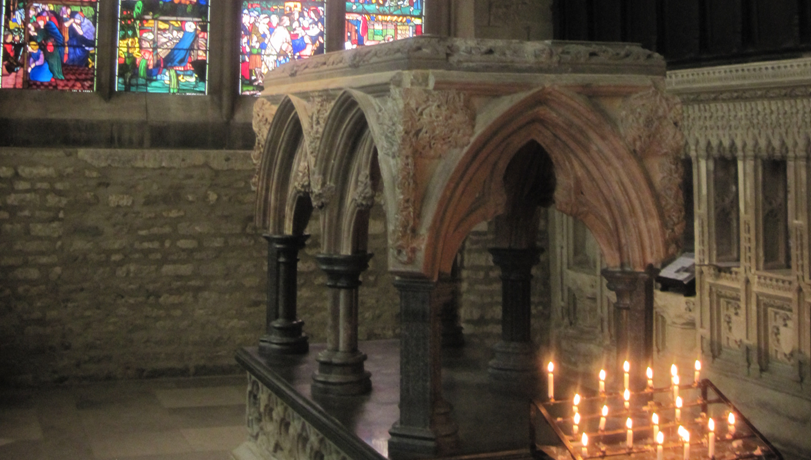 |
| Probably from as missal or Breviary for the Presentation. The Song of Simeon, Nunc Dimittis, can be read beneath the picture. |

The Song of Simeon, who was present at the Presentation, comes from Luke's gospel and is know as the Nunc Dimittis in Latin. Simeon said he would not die until he had seen the Messiah and so the Nunc is as follows from the Book of Common Prayer:
Lord, Now lettest thou thy servant depart in peace according to thy word.
For mine eyes have seen thy salvation,
Which thou has prepared before the face of all people
To be a light to lighten the Gentils and to be the Glory of thy people, Israel.
Several Anglican/Episcopal Parishes use the Sarum Rite for the celebration of Candlemass. Here, the Church of St. Thomas of Canterbury, Toronto, uses the Sarum Rite for Candlemass. Notice the blessing of the candles near the beginning of the mass. The Sarum collect is as follows and is very similar to that of our Books of Common Prayer:
Almighty and Everlasting God, we humbly beseech Thy Majesty that, as Thy Only Begotten Son was this day presented in the Temple in the substance of flesh, so we may be presented to thee with pure heart. Through Jesus Christ Our Lord, who with Thee and the Holy Spirit, liveth and reigneth, One God, now and forever, Amen.
The actual blessing of the candles is very long (three pages of solid text in my missal, so I will not type it here. But of additional interest is the use of the 'Sarum bow' instead of genuflection. Even at the elevation of the host, the most important part of the Eucharist, the celebrant takes a deep bow after the words of institution.
Senes Puerum Portabat The old man was carrying the Child
puer autem senem regebat. but it was the child who was guiding the man.
And Tomas Luis de Victoria's beautiful rendition of it by the University of Malaga:
"If Candlemass be fair and bright,
Come, Winter, have another flight;
If Candlemass brings clouds and rain,
Go Winter, and come not again."
The situation is the same as Groundhog Day! If the day is sunny (so that the groundhog sees his shadow) then winter is not over, but if it is cloudy (so that he does not see his shadow) then spring is soon to come.
 |
| Church of St. Mary the Virgin, NYC, Candlemass 2012. |

Great post! Love your header image, too!
ReplyDeleteThanks Barbara,I think I may do a post for St. Blaise also.
ReplyDelete